Available in your clinic
Not available in your clinic
Face treatments
Body treatments
Following skin traumas such as burns, injuries, severe acne or surgeries, the skin regenerates itself to protect against infections and then closes and heals the damaged area. Healthy cells migrate to the wound and then multiply to complete the healing process. The latter can cause hyperkeratinization – the abnormal multiplication of epidermal cells, which results in a texture that is different from the rest of the skin.
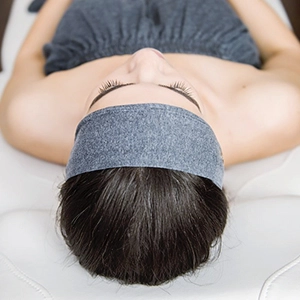
Which come from a protrusion of the dermis.
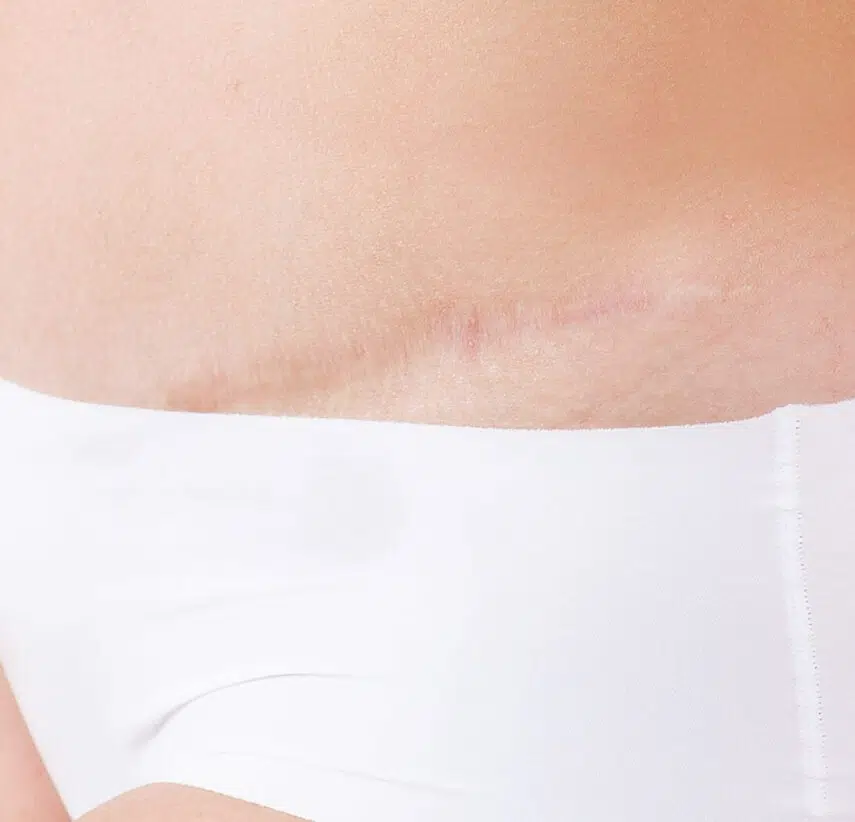
Which are lighter in colour than the natural pigmentation.
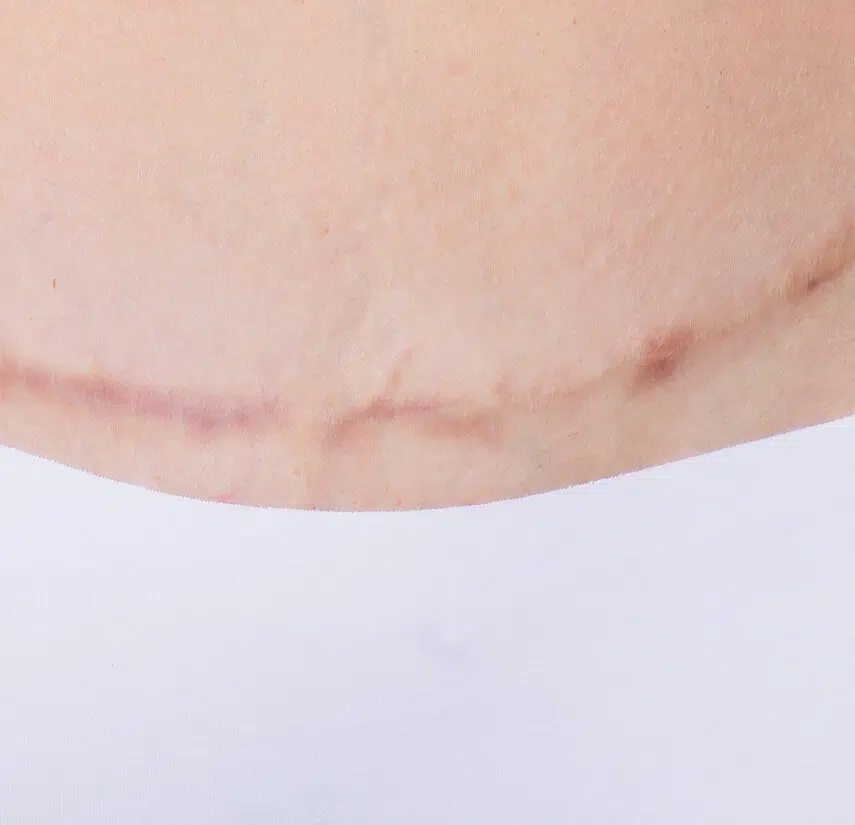
Which are darker in colour than the natural pigmentation.

Characterized by the formation of an indentation caused by a lack of dermis.

Which, through a thicker dermis, form a small raised relief at the site of the lesion.

Which come from a protrusion of the dermis.

Which are lighter in colour than the natural pigmentation.

Which are darker in colour than the natural pigmentation.

Characterized by the formation of an indentation caused by a lack of dermis.

Which, through a thicker dermis, form a small raised relief at the site of the lesion.

Which come from a protrusion of the dermis.
Healing is possible thanks to the action of collagen, a protein known for its effects on the firmness and elasticity of young and healthy skin! Collagen reunites the skin fibres to promote the healing process.
The healing process is carried out more or less quickly depending on our lifestyle, our age, the location of the wound and its degree of severity. Nevertheless, several factors influence the healing process and the long-term appearance of scars:
Some drugs, such as non-steroidal anti-inflammatory drugs and immunosuppressants, and treatments, such as chemotherapy, and certain diseases such as diabetes and kidney failure affect the body’s immune system and healing capacity. Healing may then be more difficult and the appearance of scars may be accentuated.
Over time, cells multiply and regenerate less quickly and collagen production slows down. This explains why children’s scars form quickly and why those of adults and older people form more slowly and tend to remain more apparent.
Diet, physical activity, stress management, alcohol and tobacco consumption, as well as environmental aggressors such as cold and sun are all factors that influence healing. Lifestyle can have an impact on collagen production and skin cell multiplication, which in turn can slow down healing making scars more noticeable in individuals with unbalanced diets and sedentary and/or stressful lifestyles.
Skin type is an important determinant of how the scars heal. Darker skin types (IV and up) are more likely to heal with hypertrophic scars or keloids. Areas where there is a lot of movement such as around joints can result in a worse looking scar due to constant stretching of the scar. Hypertrophic scars are excess scar tissue within the boundary of the original scar, whereas keloid scars are excess scar tissue that goes beyond the original scar.
In order to stimulate the healing process, the wound must first be properly cared for. This includes cleaning, disinfection, moisturization and the application of sterile dressings chosen according to the cause and severity of the lesion: healing should not be left to chance.
The new skin created by the healing process is thinner and younger than on the rest of the body; it is therefore more sensitive to the harmful effects of the sun. In order to reduce the appearance of the scar, it is essential to protect it from UVA and UVB rays by applying an appropriate sunscreen and covering it as much as possible until it heals completely.
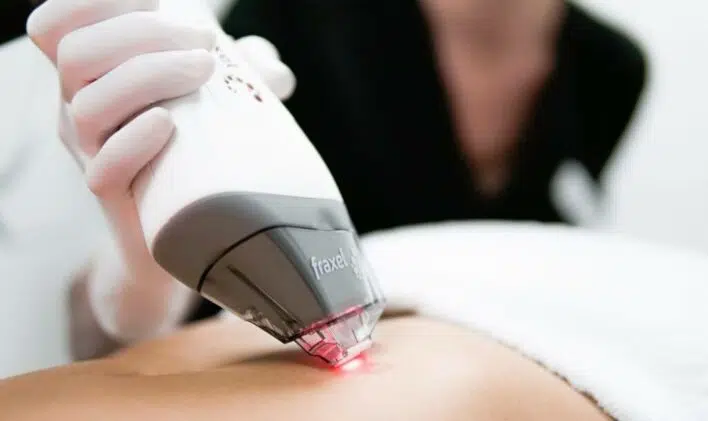
Fractional resurfacing improves texture, spots and fine lines. This very safe procedure causes micro-perforations in the dermis which in turn stimulate the skin to repair them by producing new collagen and building a new skin structure. The new skin formed combines with existing skin to reduce the appearance of scars, whether caused by acne, injury, aging or surgery.
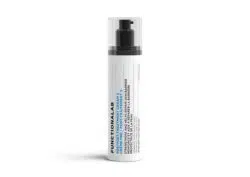
This lipid-rich cream restores dehydrated, fragile skin. An optimized ratio of essential lipids balances the lipid barrier to soothe the skin and protect it against dryness.
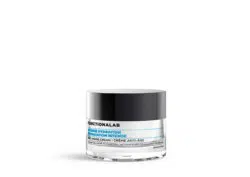
This Intense Moisturizing Anti-Aging Cream increases the overall radiance of the skin. Short-, medium- and long-term hydration is visibly improved and gives the skin a firmer and revitalized appearance.
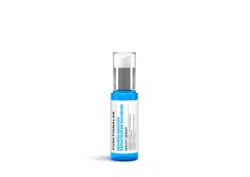
Composed of a unique blend of active ingredients, this serum minimizes the appearance of redness, refreshes the skin and reduces inflammation and irritation. Its formula is designed to help prevent and eliminate redness and irritation caused by rosacea, urban pollution and common clinical interventions, such as laser and pulsed light treatments, neuromodulator or filler injections and chemical peels.
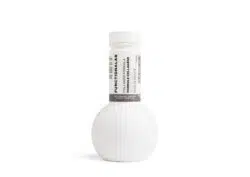
This nutricosmetic has been designed to support the natural production of collagen, which contributes to the skin’s resistance and elasticity. It contains a unique combination of hydrolyzed collagen, vitamin C and two amino acids, L-lysine and L-proline. Collagen Formula stimulates collagen production from within, brightens the complexion and provides antioxidant protection.
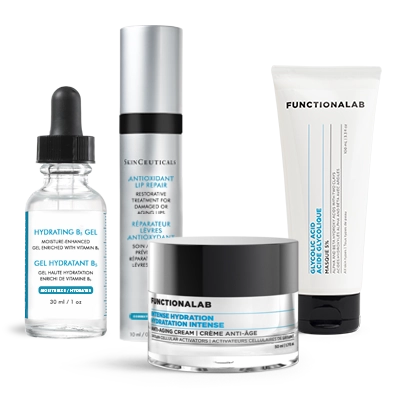
Shop our products for an enhanced beauty routine!
Dermapure is Canada’s largest network of premium medical aesthetic clinics, renowned for its exceptional medical team and dedication to helping clients achieve their aesthetic goals. With locations nationwide, Dermapure offers advanced treatments and personalized care, setting the standard for excellence in medical aesthetics.
Subscribe to our newsletter get $25 off your first purchase*
Welcome! Dr.Karen O’Neill Cosmetic Dermatology is now
Dermapure Mississauga Erin Mills
Our commitment remains unwavering. Same clinics, doctors, and staff. Step in with confidence; your well-being is our constant dedication
Welcome! Concept Medical is now
Dermapure Ottawa
Our commitment remains unwavering. Same clinics, doctors, and staff. Step in with confidence; your well-being is our constant dedication
Welcome! Laser Skin Vein is now
Dermapure Brandon
Our commitment remains unwavering. Same clinics, doctors, and staff. Step in with confidence; your well-being is our constant dedication
Welcome! Ancaster Dermatology is now
Dermapure Ancaster
Our commitment remains unwavering. Same clinics, doctors, and staff. Step in with confidence; your well-being is our constant dedication
Welcome! SKIN Prince George is now
Dermapure Prince George
Our commitment remains unwavering. Same clinics, doctors, and staff. Step in with confidence; your well-being is our constant dedication
Welcome! Skinpossible is now
Dermapure Calgary Chaparral
Our commitment remains unwavering. Same clinics, doctors, and staff. Step in with confidence; your well-being is our constant dedication
Welcome! Skinpossible is now
Dermapure Calgary Chaparral
Our commitment remains unwavering. Same clinics, doctors, and staff. Step in with confidence; your well-being is our constant dedication
Welcome! Longevity Medical is now Dermapure Parksville!
Our commitment remains unwavering. Same clinics, doctors, and staff. Step in with confidence; your well-being is our constant dedication.
Welcome! Dermal Laser Centres is now Dermapure!
Our commitment remains unwavering. Same clinics, doctors, and staff. Step in with confidence; your well-being is our constant dedication.
Welcome! ReNue clinic is now Dermapure!
Our commitment remains unwavering. Same clinics, doctors, and staff. Step in with confidence; your well-being is our constant dedication
Welcome! Rosenthal Clinic is now
Dermapure Victoria
Our commitment remains unwavering. Same clinics, doctors, and staff. Step in with confidence; your well-being is our constant dedication
Welcome! Viva Medical Aesthetics is now
Dermapure Cowichan!
Our commitment remains unwavering. Same clinics, doctors, and staff. Step in with confidence; your well-being is our constant dedication
Welcome! Dr. Boulous Medical Spa is now
Dermapure Newmarket!
Our commitment remains unwavering. Same clinics, doctors, and staff. Step in with confidence; your well-being is our constant dedication
Welcome! Peause is now
Dermapure Longueuil-sur-le-parc
Our commitment remains unwavering. Same clinics, doctors, and staff. Step in with confidence; your well-being is our constant dedication
Welcome! Bellissima Medical is now
Dermapure Dieppe!
Our commitment remains unwavering. Same clinics, doctors, and staff. Step in with confidence; your well-being is our constant dedication
Welcome! RevitalizeMD is now
Dermapure West Edmonton!
Our commitment remains unwavering. Same clinics, doctors, and staff. Step in with confidence; your well-being is our constant dedication